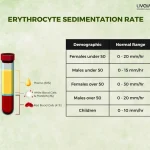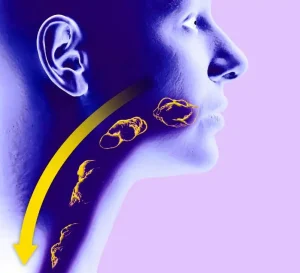
Few nutrients play as pivotal a role as Vitamin D in our overall well being. It is also known as the “sunshine vitamin.” What makes vitamin D essential is its role in maintaining strong bones and physiological processes that impact our health. Despite its significance, an alarming number of individuals worldwide suffer from Vitamin D deficiency, primarily due to changing lifestyles and limited exposure to sunlight.
This article looks at a comprehensive list of twelve common symptoms of Vitamin D deficiency. From the subtle to the more pronounced, recognizing these indicators can help you take proactive steps toward better health and vitality. So, let’s look at the vital role of Vitamin D and how its insufficiency might manifest in our bodies.
What is the role of Vitamin D in our body?
Vitamin D is a fat-soluble powerhouse that holds a crucial position in maintaining our body’s balance of calcium and ensuring the health of our bones. Its significance becomes starkly evident when we consider the consequences of its absence. In children, its deficiency can lead to the development of rickets, a condition that softens growing bones.
In adults, it results in osteomalacia, characterized by weakened bones. It’s worth noting that history witnessed a remarkable stride in our battle against these conditions when vitamin D-fortified milk emerged in the 1930s. It successfully helped curb the prevalence of rickets.
However, the shadows of vitamin D deficiency still loom large in our modern world. Even today, an undercover insufficiency of this vitamin is widespread across advanced and emerging economies. This hidden shortage, though not as overt as rickets or osteomalacia, contributes to issues like osteoporosis, amplified fall risks, and the heightened likelihood of fractures in vulnerable populations. [1]
What leads to Vitamin D deficiency in our body?
Vitamin D deficiency, despite its pivotal role, can creep into our lives due to the following factors.
- Decreased dietary intake and absorption
Insufficient consumption of vitamin D food items, along with problems related to nutrient absorption in the digestive tract, can lead to decreased levels of the vitamin in the body. [1]
- Reduced sun exposure
Limited exposure to sunlight can be due to lifestyle factors, indoor jobs, or geographical location. It can hinder the body’s natural process of synthesizing vitamin D from sunlight. [1]

- Reduced endogenous synthesis
Factors like aging and medical conditions can reduce the skin’s ability to synthesize vitamin D when exposed to sunlight. [1]
- Elevated hepatic catabolism
In some cases, medications like phenobarbital, carbamazepine, and dexamethasone, can induce hepatic P450 enzymes. It triggers the degradation of vitamin D. [1]
- End organ resistance
Instances of resistance within target organs can reduce their responsiveness to the effects of vitamin D. It becomes challenging for the body to utilize the available vitamin effectively. [1]
12 symptoms of Vitamin D
Recognizing the signs of Vitamin D deficiency is crucial in maintaining our health. While its impact on bone health is widely known, the symptoms it can trigger are far-reaching. Here are twelve indicators to watch out for.
- Fatigue
Vitamin D deficiency can be a factor if you’re feeling persistently tired. Inadequate levels of this essential nutrient might be sapping your energy levels. [2]
- Lack of proper sleep
Vitamin D plays a role in regulating sleep patterns. If you find yourself struggling with sleep, it might be worth considering your vitamin D status. [2]
- Bone pain
Aching bones could be your body’s way of signaling a deficiency in vitamin D, which is crucial for maintaining bone health.
- Feelings of sadness
Emerging research has linked vitamin D deficiency with an increased risk of mood disturbances. [2]
- Hair loss
Hair thinning or excessive hair loss could result from insufficient vitamin D levels. [2]

- Muscle weakness
Vitamin D deficiency can lead to muscle issues, impacting overall physical strength and performance. [2]
- Loss of appetite
If your appetite has been waning, it’s worth considering whether vitamin D deficiency could be at play. [2]
- Getting sick more easily
Vitamin D is pivotal in supporting the immune system. Frequent illnesses might be a sign of its deficiency. [2]
- Pale skin
Vitamin D deficiency can lead to paler skin, as the skin’s ability to produce the pigment melanin can be affected. [2]
- Hypocalcemia
Inadequate vitamin D can disrupt calcium balance, potentially leading to low blood calcium levels (hypocalcemia), which can have various health implications. [1]
- Hyperparathyroidism
Insufficient vitamin D levels can trigger overactivity of the parathyroid glands, which regulate calcium levels, potentially leading to hyperparathyroidism. [1]
- Weakness
Generalized weakness, both physically and potentially in immune response, can manifest in vitamin D deficiency. [1]
Effective measures to overcome Vitamin D deficiency in our body
Combatting vitamin D deficiency is a proactive endeavor that involves a combination of mindful choices. Here are some practical steps to bolster your vitamin D levels.
- Consume foods naturally high in vitamin D
Incorporating foods naturally rich in vitamin D can be a healthy option to boost your levels. For vegetarians, fortified dairy products and mushrooms are an excellent option for your daily intake. [2]
- Consume vitamin D-fortified foods
Many foods, like certain types of milk, cereals, and orange juice, come with this vitamin. The enhancement ensures a consistent nutrient supply even when dietary sources are limited. [2]
- Get vitamin D from sunlight
Natural sunlight remains one of the most potent sources of vitamin D. Aim for brief, regular sun exposure on your skin during mid-morning or late afternoon. The exposure encourages your skin to synthesize vitamin D, supporting overall health. [2]
- Take a vitamin D supplement
When dietary and sunlight sources are insufficient, vitamin D supplements can provide a reliable way to meet your requirements. Consult a doctor to understand the dosage and form of supplement based on your needs. [2]

Using Ayurveda to overcome Vitamin D deficiency in the body
When it comes to natural healing, Ayurveda offers a valuable approach to tackling vitamin D deficiency. Rooted in ancient wisdom, Ayurveda emphasizes balance and harmony for overall wellbeing, including managing deficits like vitamin D. It suggests aligning with nature by spending time outdoors during gentle sun exposure hours, aiding the body’s natural synthesis of vitamin D.
Ayurveda’s dietary principles, focusing on nutrient-rich foods like ghee and fortified milk, coincide with modern recommendations to enhance vitamin D intake. Mind-body practices such as yoga and meditation, integral to Ayurveda, can reduce stress. It can support healthy vitamin D levels.
Its individualized approach further sets Ayurveda apart, where personalized lifestyle adjustments can help restore balance. While incorporating Ayurvedic insights, it’s essential to collaborate with Ayurvedic practitioners and conventional healthcare professionals to create a comprehensive strategy for overcoming vitamin D deficiency.
FAQs
1. What are the effects of vitamin D deficiency?
Vitamin D deficiency can cause weakened bones, fatigue, muscle weakness, compromised immune function, depression, and hair loss. Furthermore, there can be an increased risk of chronic diseases like osteoporosis and cardiovascular issues.
2. What are vitamin D deficiency and cancer symptoms?
Vitamin D deficiency might not directly cause cancer, but research suggests a link between low vitamin D levels and a heightened risk of cancers. Vitamin D deficiency symptoms are generally nonspecific, including fatigue, muscle pain, and weakened immunity.
3. What are the symptoms of vitamin B12 and vitamin D deficiency?
Vitamin B12 deficiency symptoms can include fatigue, weakness, tingling in extremities, and cognitive issues. Vitamin D deficiency symptoms include bone pain, muscle weakness, fatigue, and mood changes.
4. How to check vitamin D levels at home?
Home vitamin D testing kits are available online or at pharmacies. These kits usually involve a finger prick to collect a blood sample, which goes to a lab for analysis. You can get the results via email.
5. How do you check vitamin D levels?
You can check your vitamin D levels through a blood test. The test measures 25-hydroxyvitamin D levels in your blood, indicating your vitamin D status.
6. How do you determine high or low vitamin D?
A blood test measures your vitamin D levels. If the result indicates a higher value of 25-hydroxyvitamin D, it could suggest sufficient levels. Conversely, a lower value indicates potential deficiency. Your healthcare provider can check the results and recommend appropriate actions.
Conclusion
When looking to maintain optimal health, the role of vitamin D takes center stage. From its influence on bone health to its impact on immunity and overall well being, this humble nutrient plays a multifaceted role that you should be aware of.
Recognizing the symptoms of vitamin D deficiency and understanding the measures available to overcome it can empower you to take charge of your health journey. Furthermore, combining these modern insights with the age-old wisdom of Ayurveda can help you stride confidently toward illuminating a path to vibrant health.
Disclaimer
The information provided here does not intend to replace professional advice or treatment.
References






















